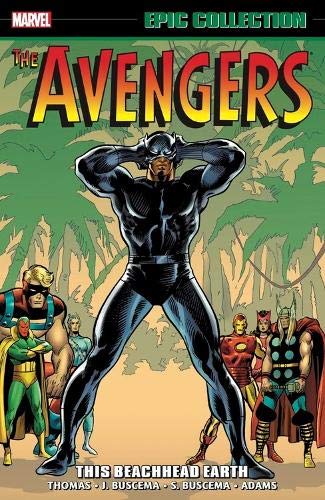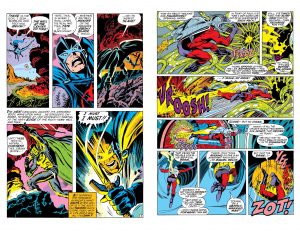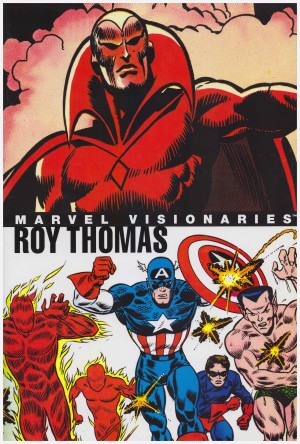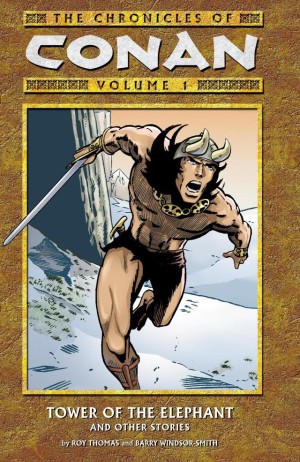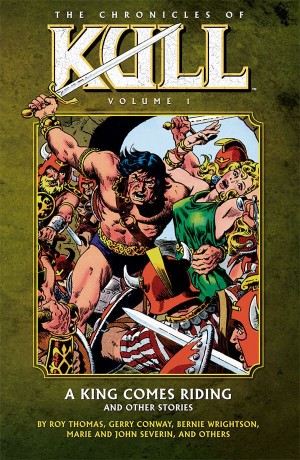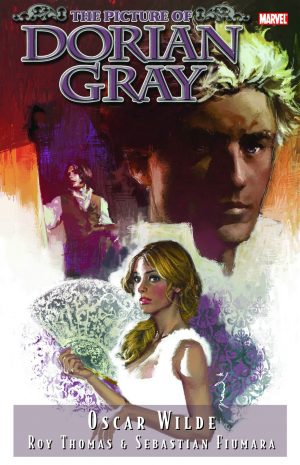Review by Karl Verhoven
It took Roy Thomas a while to settle into writing The Avengers, but once he hit his groove, he turned out one classic after another, and almost all his best efforts are contained within This Beachhead Earth, bringing together his work from summer 1970 to summer 1972. The period was one of turbulent social awareness in the USA, and while contemporary DC comics are recognised for shouting this from the rooftops, Thomas incorporated issues, but brought them to people’s notice while prioritising an entertaining superhero story. This collection features businessmen profiting from social deprivation, Native American exploitation, feminism (that very clumsily), and, more obliquely, nuclear proliferation and mixed race relationships. The issues never overwhelm, and the accompanying stories almost always defy convention.
Thomas also deserves credit for showing how the Avengers could fit into many different types of story, the sheer variety so impressive. The collection begins with the team broke and having to hire out their unique talents, and ends with them involved in an intergalactic war. In between they’ve visited a couple of alternate universes, had run-ins with a couple of super villain groups, run through the Black Panther’s origin, seen Manhattan invaded by terrorists and Thomas has teamed with SF author Harlan Ellison for a strange Hulk story, which doesn’t quite work. In dropping the Avengers into the middle of the Kree/Skrull War Thomas also crafted the longest Marvel had published to 1972. He broke it down into smaller segments, starting on Earth, but it runs to nine chapters overall, and even removing the prologue it’s still six.
While Thomas had craft and ambition, these stories wouldn’t be anywhere near as memorable were he not working with first rate artists. The sample spread combines pages by John Buscema and Neal Adams, featuring guest characters so well worked in by Thomas, the quality of both artists surely undeniable, and they draw most content. Sal Buscema’s early Marvel work was closer in style to his brother, although not as attractive when inked by Jim Mooney, while roles are reversed when he inks Frank Giacoia’s decorative pencils on the Panther’s origin. Herb Trimpe’s sub-Kirby style is more awkward.
Attempts were made to keep the dialogue contemporary, and this dates the stories, as do misguided comments such as Clint Barton as Goliath rejecting the Scarlet Witch’s offer of help with “If I want a powder puff lady, I’ll send you a smoke signal”. The Scarlet Witch is the weakest written character overall, the only woman regularly seen alternatively simpering helplessly or providing the magical get-out in a pivotal moment. Thomas is far more effective in exploring New York’s African American community via the Panther teaching at a high school, although some aspects of that may now seem patronising, no matter how well intended at the time. It’s the curse of progress.
Given the minor drawbacks mentioned, this remains a strong collection of Avengers material. If smaller or more luxuriously presented collections are preferable, the stories are found in hardcover spread over Marvel Masterworks Avengers Vols 9 and 10, or in black and white in Essential Avengers 5. The Kree/Skrull War section is available as a standalone graphic novel.
